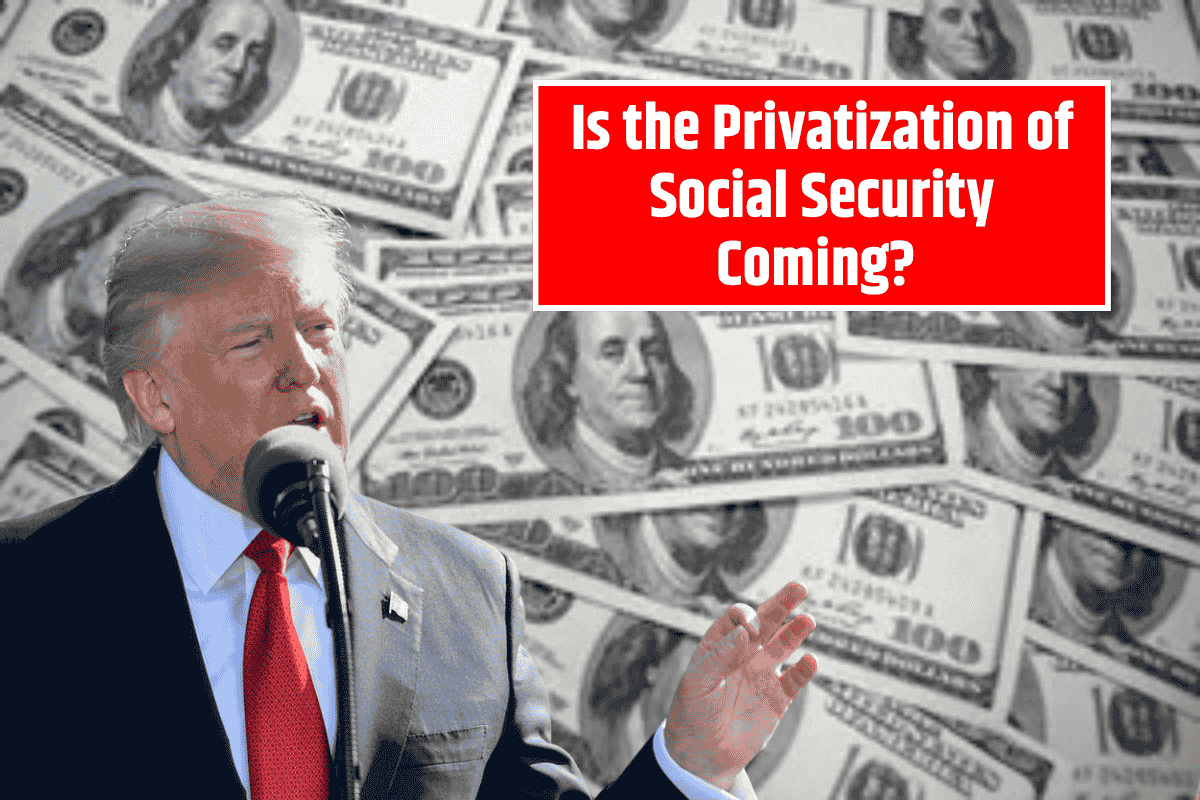Rumors about a possible reform of the Social Security Administration (SSA) in the United States have been growing, and many are speculating about the potential privatization of the system.
Since its creation in 1935, Social Security has been a cornerstone of the nation’s welfare system, providing pensions to retired, blind, and disabled individuals.
The idea of privatizing this public system has sparked debate. Would this reform be a positive change, or would it introduce more risks to retirees’ financial security?
What Would Privatizing Social Security Mean?
Privatizing Social Security would mean that individuals would manage their retirement savings through private accounts rather than relying on the current public system.
Under the Federal Insurance Contributions Act (FICA), workers currently contribute 6.2% of their salaries to the government, and employers match that with an additional 6.2%. These funds are then used to provide guaranteed monthly payments to retirees, blind individuals, and those with disabilities.
If the system were privatized, that 6.2% would instead be directed into private retirement accounts, funds, or other investment opportunities chosen by the workers themselves. This would give individuals more control over their own savings and retirement funds.
Proponents argue that it would provide more flexibility and potentially higher returns, which would give people a better chance of securing a comfortable retirement. Moreover, it could reduce the financial burden on the federal government by relieving it of the responsibility of funding pensions.
The Current System: Social Security and Retirement
The Social Security Administration (SSA) has been managing the Supplemental Security Income (SSI) program for retirees, the blind, and the disabled since 1935. Upon reaching retirement, individuals receive monthly payments based on their lifetime contributions.
The current system aims to provide a financial safety net for those who have contributed throughout their working lives, ensuring they have a dignified standard of living after they retire.
Under this system, retirees receive regular payments, regardless of how the economy is performing or the risks involved. This safety net ensures that individuals do not outlive their retirement savings or face drastic cuts due to poor investment choices. However, concerns have been growing about the long-term sustainability of the system.
Why Privatize Social Security?
The idea of privatizing Social Security is largely driven by demographic changes. In the United States, the fertility rate is decreasing, and people are living longer. This means that more people will be retiring in the coming decades, while fewer people will be working to support them.
By 2080, it is predicted that 23% of the U.S. population will be retired, compared to a shrinking workforce that will not be able to sustain the current pension system. This shift is expected to create a significant imbalance in the retirement system.
Privatization advocates argue that by allowing people to control their own retirement savings, they would have more flexibility to adapt to changing economic conditions and take advantage of investment opportunities. Additionally, this would help reduce the growing financial burden on the federal government.
Disadvantages of Privatization
While privatization may seem appealing in theory, there are some significant downsides that could affect many workers:
- Risk of Poor Investment Choices: The average person may not have the knowledge or skills to manage an investment portfolio effectively. Many workers might make risky investment choices, leading to poor returns on their retirement savings. If the market takes a downturn or individuals make poor withdrawals at the wrong time, retirees could find themselves without sufficient funds.
- Lack of Security: Unlike the current public system, which guarantees a monthly payment regardless of economic conditions, privatized accounts could lead to uncertain retirement income. If people fail to save enough or make poor investments, they might have no safety net to fall back on.
- Reduced Contributions to the Public System: If individuals choose to invest more into private accounts, less money would go into the traditional Social Security system. This could further strain the current system and lead to even greater challenges in funding pensions for future retirees.
- Economic Inequality: Those with higher incomes or better financial education might thrive under a privatized system, but lower-income workers might struggle to build adequate retirement savings. This could lead to a wider gap in financial security for retirees, increasing economic inequality in the U.S.
A Possible Middle Ground: Partial Privatization
Some legislators and economists have suggested that a partial privatization approach could serve as a middle ground. In this scenario, workers could be allowed to direct a portion of their contributions to private accounts while maintaining a smaller percentage within the public system.
This would still give individuals some control over their retirement savings but would ensure that the public system continues to provide a financial safety net.
However, this approach also comes with challenges, as it could still reduce the amount of money flowing into the traditional Social Security system, which is already facing sustainability concerns.
What’s Next for Social Security?
While the idea of privatizing Social Security continues to be discussed, the current system remains intact for now. The concerns over the future sustainability of the system due to demographic changes are valid, but shifting to a privatized model presents several risks.
If individuals are left to manage their retirement savings, many may face uncertainty in their golden years due to poor investment choices or lack of financial knowledge.
The debate over privatizing Social Security will likely continue as the U.S. faces challenges in supporting an aging population. Whether partial privatization or another solution will be adopted remains to be seen, but for now, the public system provides the security of guaranteed monthly payments that millions of Americans rely on for their retirement.
